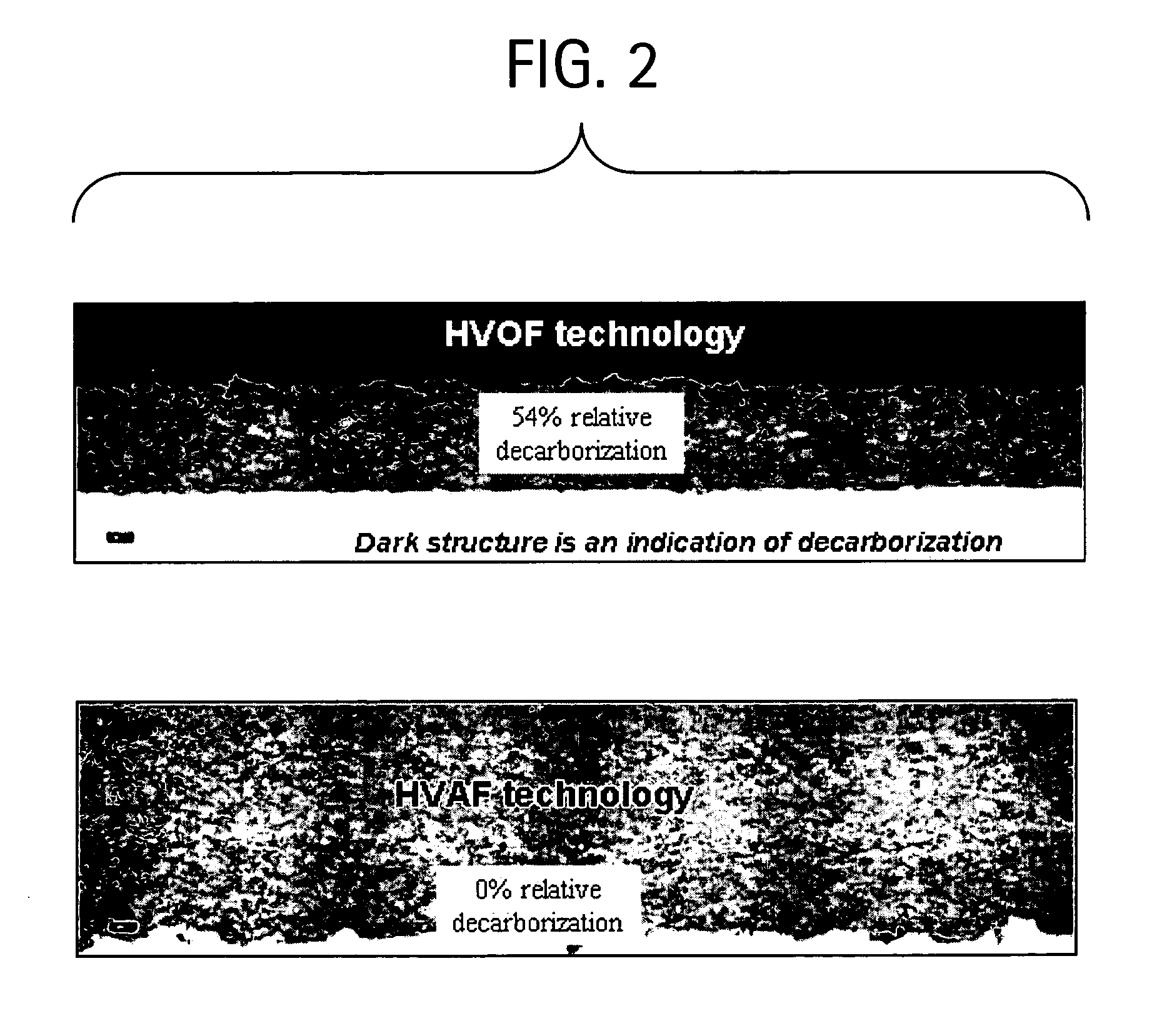Erosion resistant coatings and methods thereof
a technology of erosion resistance and hydroelectric turbines, applied in the direction of natural mineral layered products, ceramic layered products, transportation and packaging, etc., can solve the problems of hydroelectric turbine components, hydroelectric turbine components, and hydroelectric turbine components that have not been found to undergo significant erosion, so as to improve the erosion resistance of a surface
- Summary
- Abstract
- Description
- Claims
- Application Information
AI Technical Summary
Benefits of technology
Problems solved by technology
Method used
Image
Examples
Embodiment Construction
[0020]Disclosed herein are coating compositions and coating methods that provide erosion resistance to components prone to silt erosion while simultaneously maintaining suitable corrosion resistance. In one embodiment, a high velocity air fuel (HVAF) process is employed for depositing erosion resistant coatings onto a component surface. The HVAF process is a material deposition process in which coatings are applied by exposing a substrate to a high-velocity jet at about 600 m / s to about 800 m / s of about 5 to about 45 micron particles that are accelerated and heated by a supersonic jet of low-temperature “air-fuel gas” combustion products. The HVAF spraying process deposits an extremely dense (minimal porosity) and substantially non-oxidized coating. Moreover, increased thicknesses can be obtained relative to other thermal plasma spray processes, resulting in turbine components exhibiting superior erosion resistance properties. The HVAF process utilizes a fuel such as propane or prop...
PUM
| Property | Measurement | Unit |
|---|---|---|
| thickness | aaaaa | aaaaa |
| diameter | aaaaa | aaaaa |
| diameter | aaaaa | aaaaa |
Abstract
Description
Claims
Application Information
 Login to View More
Login to View More - R&D
- Intellectual Property
- Life Sciences
- Materials
- Tech Scout
- Unparalleled Data Quality
- Higher Quality Content
- 60% Fewer Hallucinations
Browse by: Latest US Patents, China's latest patents, Technical Efficacy Thesaurus, Application Domain, Technology Topic, Popular Technical Reports.
© 2025 PatSnap. All rights reserved.Legal|Privacy policy|Modern Slavery Act Transparency Statement|Sitemap|About US| Contact US: help@patsnap.com



